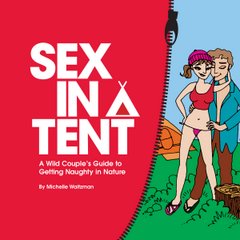 After our inpiring visit to Kapiti Island, we decided to take advantage of a cheap-admission day to check out the Karori Wildlife Sanctuary in the suburbs of Wellington. The sanctuary is set up as an inland island in order to encourage the repopulation of native birds in the city.
After our inpiring visit to Kapiti Island, we decided to take advantage of a cheap-admission day to check out the Karori Wildlife Sanctuary in the suburbs of Wellington. The sanctuary is set up as an inland island in order to encourage the repopulation of native birds in the city.What is an inland island, I hear you ask? Basically, they have surrounded a large area of parkland with a predator-proof fence, and eliminated all of the mammals that lived inside the area.
 The fence is made of a tight mesh that even the smallest mouse can't creep through. It goes down into the ground to prevent tunneling, and along the top is a rounded metal barrier, which prevents anything from climbing up and over, sort of like the squirrel guards on bird feeders.
The fence is made of a tight mesh that even the smallest mouse can't creep through. It goes down into the ground to prevent tunneling, and along the top is a rounded metal barrier, which prevents anything from climbing up and over, sort of like the squirrel guards on bird feeders. So far this seems to be working, and a network of traps around the sanctuary is in place in case any stray rodents do manage to get in. With no mice, stoats or rats around, the birds can flourish. The results are already obvious to locals who have notice more birds in their neighbourhoods over the past few years.
So far this seems to be working, and a network of traps around the sanctuary is in place in case any stray rodents do manage to get in. With no mice, stoats or rats around, the birds can flourish. The results are already obvious to locals who have notice more birds in their neighbourhoods over the past few years.
Despite this, we didn't see a whole lot of birds while we were there. There was one kaka (North Island parrot) at a special feeder. Other than that, we only saw and heard a few birds around. So instead we had to enjoy the greenery, and the historic elements of the sanctuary.
One historic site there is an old dam, built around 1910. It creates the Karori Reservoir. I'm not sure if the reservoir is used for drinking water. There doesn't appear to be a pump house or anything around. But the dam seems to be in good shape.
 There is also a small tunnel you're allowed to visit, which remains from an old gold mine. New Zealand had a gold rush in the 1860s, and although most of the gold was found on the South Island, it appears there was actually a bit in Wellington too! There's not much to the tunnel, but there are cave wetas inside, so we got to see a big bug.
There is also a small tunnel you're allowed to visit, which remains from an old gold mine. New Zealand had a gold rush in the 1860s, and although most of the gold was found on the South Island, it appears there was actually a bit in Wellington too! There's not much to the tunnel, but there are cave wetas inside, so we got to see a big bug. All in all, it was a nice enough place to go for a walk, but it paled in comparison to Kapiti Island in terms of bird life. On the other hand, it costs $12 to get into Karori Sanctuary (although the day we went was a $2 special), while just the return ferry to Kapiti Island costs $55, and the permit to go there another $10. Still, if you are interested in birds, and visiting New Zealand, I'd go for the more expensive, more impressive version.
All in all, it was a nice enough place to go for a walk, but it paled in comparison to Kapiti Island in terms of bird life. On the other hand, it costs $12 to get into Karori Sanctuary (although the day we went was a $2 special), while just the return ferry to Kapiti Island costs $55, and the permit to go there another $10. Still, if you are interested in birds, and visiting New Zealand, I'd go for the more expensive, more impressive version.





No comments:
Post a Comment